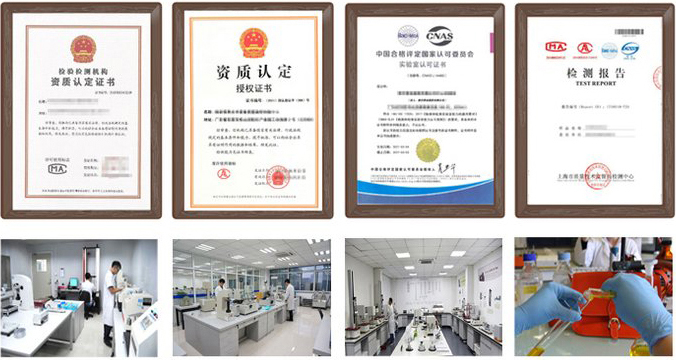Sophora japonica glycosides detectionHow to apply for a report? What items need to be tested? We will conduct testing and evaluation in strict accordance with the standards. We can also provide personalized testing plans and reports according to your needs.
The detection method of Sophora japonica glycoside mainly adopts high-performance liquid chromatography (HPLC). The following are the steps and conditions of a typical HPLC detection method for sophora japonica glycoside:
I. Instruments and reagents
Instruments: high-performance liquid chromatograph, chromatographic column (such as Inertsil ODS C18, YWG ODS C18 column, Kromasil 100-5-C18, etc., the specifications may be different, such as 250mm×4.6mm, 5μm or 10μm, etc.), ultrasonic processor, etc.
Reagents: methanol, acetonitrile, phosphoric acid, sophora japonica glycoside reference substance, 70% ethanol, etc.
II. Chromatographic conditions
Mobile phase: methanol-acetonitrile-0.07% phosphoric acid aqueous solution, the ratio may be 12:20:68 or other suitable ratios, the specific ratio may vary depending on the experimental conditions.
Detection wavelength: usually 260nm.
Flow rate: generally 1.0mL/min.
Column temperature: room temperature or set to a specific temperature, such as 30℃ or 40℃.
Injection volume: generally 10μL.
3. Preparation of test solution
Take an appropriate amount of Sophora japonica powder (such as 2g) and sieve it (such as No. 3 sieve or 50 mesh sieve).
Weigh it accurately and place it in a stoppered conical bottle.
Add 70% ethanol or other suitable solvents accurately, such as 50mL, and weigh it.
Ultrasonic treatment for a period of time, such as 45 minutes. The power and frequency may vary depending on the equipment (such as power 300W, frequency 25kHz).
After cooling, weigh it again and make up the lost weight with the same solvent.
Shake well and filter it. Accurately measure an appropriate amount of the filtrate (such as 0.5mL), place it in a volumetric bottle of a certain capacity (such as 20mL), add methanol to the scale, and shake well.
4. Preparation of reference solution
Take an appropriate amount of Sophora japonica glycoside reference, weigh it accurately, and add methanol or other suitable solvents to make a solution of a certain concentration, such as a solution containing 25μg of Sophora japonica glycoside per 1mL.
5. Determination steps
Inject the reference solution and the test solution into the high-performance liquid chromatograph for determination.
Record the chromatogram, use the chromatographic peak of the reference solution as a reference, and calculate the content of sophora japonica glycoside in the test solution.
VI. Precautions
During the experiment, the experimental conditions, such as temperature, humidity, light, etc., should be strictly controlled to avoid affecting the experimental results.
The reagents and solvents used should comply with relevant standards and expired or unqualified reagents and solvents should be avoided.
When preparing the test solution and the reference solution, they should be accurately weighed and measured to avoid errors.
In short, the detection method of sophora japonica glycoside requires strict control of experimental conditions and operating steps to ensure the accuracy and reliability of the experimental results. The content of Sophora japonica glycoside in Sophora japonica can be accurately determined by high-performance liquid chromatography, which provides an important basis for the quality control and efficacy evaluation of Sophora japonica.
Test report function
1、Project bidding: issue authoritative third-party CMA/CNAS qualification report;
2、E-commerce platform entry: quality inspection reports recognized by major e-commerce platforms;
3、Used as sales report: issuing a test report with legal effect to make consumers feel more at ease;
4、Papers and scientific research: providing professional and personalized testing needs;
5、Judicial services: providing scientific, fair and accurate testing data;
6、Industrial problem diagnosis: verifying the troubleshooting and correction of problems in industrial production;


 National free customer service telephone 400-101-7153
National free customer service telephone 400-101-7153 

